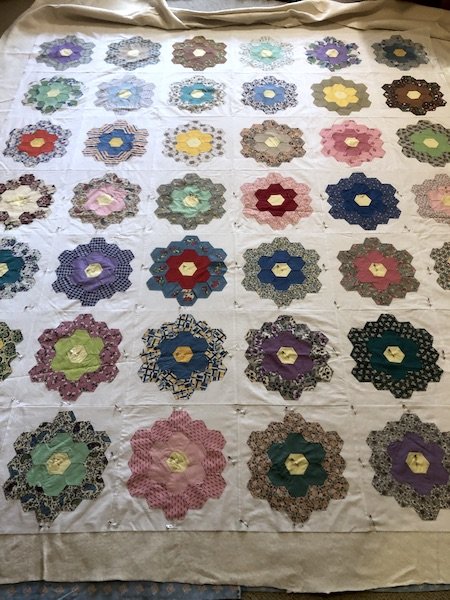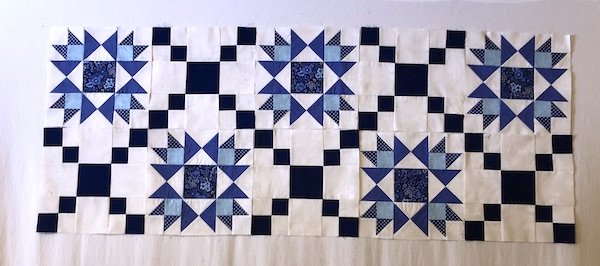I no longer wonder why sergers sit, unused, in closets all over the world. We are in the age of limitless information and yet it has taken me more than a month of reading and watching YouTube videos to get a handle on the flatlock stitch. And I don’t think it’s because I am stupid.
I should point out that I am one of those people who is most comfortable learning by following an example. Nothing makes me more anxious than being thrown into something without a detailed road map to follow and being told to figure it out. I’d like to think that is part of what makes me a good teacher, because when I develop class materials, I always make sure that what the student learns is framed within some kind of context and shows concrete examples—in other words, I teach the way I would like to learn. That doesn’t work for every student, but the ones who don’t need that information can ignore it.
The first place I went for information on the flatlock stitch was the manual for my Juki serger. I actually have two manuals: the basic setup manual and an additional manual that has more in-depth information as well as some projects. I think one of the projects might feature the flatlock stitch, but I can’t tell from either the instructions or the photo. That manual does, at least, have suggested stitch settings. It also mentioned something about a converter, and I found one in my box of accessories, but that was the extent of the guidance.
I pulled out a couple of my serger books. Several of them have very good photos, but again, what I was missing most was context. When would I use the flatlock stitch? And when would I use a two-thread flatlock versus a three-three flatlock? What is a reverse flatlock stitch?
I picked up snippets of information here and there. Flatlock mimics the seams on activewear, although most of those are done on industrial flatlock machines or on coverstitch machines. Flatlocking can be done with decorative threads. (Okay, which decorative threads?) Flatlocking can also be done on woven fabrics.
I searched for patterns and projects on the internet. I found a few, including some on the Bernina website. I have to say, Bernina does a good job of educating consumers, but that’s almost a requirement for them to do so because their products are so expensive. It’s hard to convince someone to spend $8000 (not a typo) on a top-of-the line serger/coverstitch machine unless that person knows how they are going to be able to use it. Still, the Bernina projects don’t always provide sufficient background material about stitches, thread, and fabric choices.
Gail Yellen is a Bernina educator and she’s really good. I want to take a class from her someday. She has a placemat project featuring pintucks and flatlocking on the serger. The accompanying YouTube video is an hour and a half long. I have watched it twice and plan to watch it at least one more time. When I finally thought I had a handle on flatlocking and its variations, I went back and watched other videos and read my serger books again. The information is finally starting to fall into place.
I had an hour yesterday afternoon before the husband got home, so I sat down at the serger yesterday to experiment. The first step was to unthread, clean, oil, and put in a new needle. Flatlocking is done with one needle, most commonly the left needle. I rethreaded the serger with three different colors of regular serger thread—so I could see what thread(s), if any, needed to be adjusted— got the serger to make a chain, then rethreaded the upper looper with a 12wt Aurifil cotton thread, as suggested by Gail Yellen.
The flatlock is an unbalanced stitch, meaning that some of the threads are deliberately looser or tighter than they would be if I were sewing a seam or finishing an edge. The red is the 12wt Aurifil. It is thicker than regular serger thread. I have white serger thread in the lower looper and green serger thread in the needle. This is how the edge looks when it comes off the serger:








































